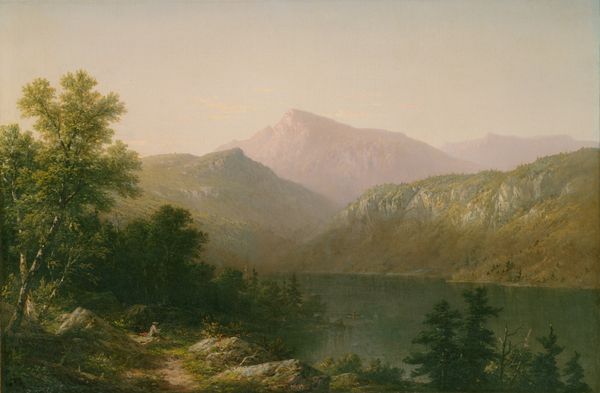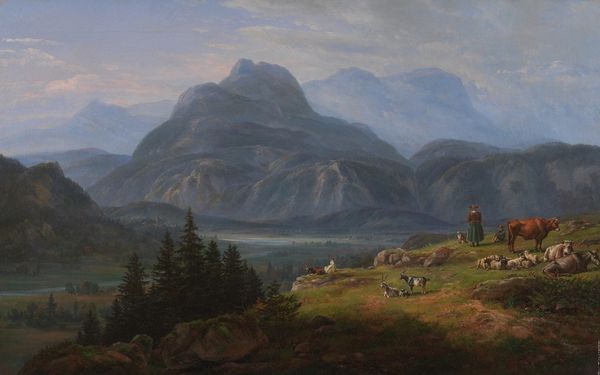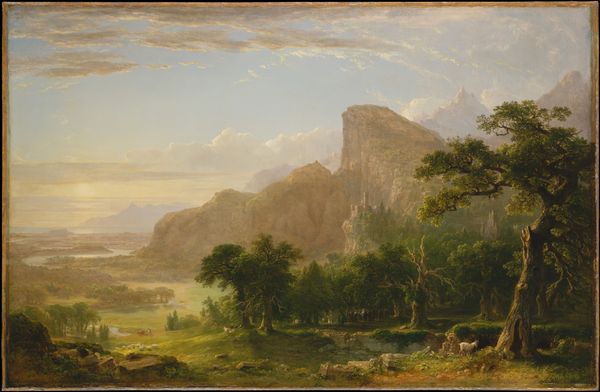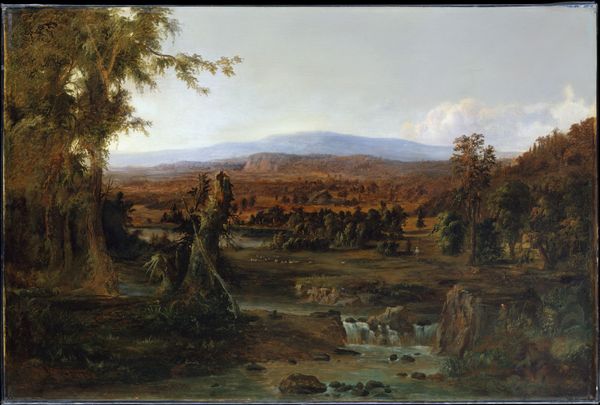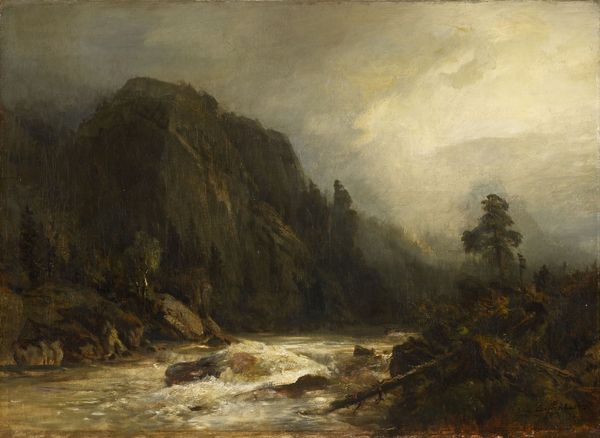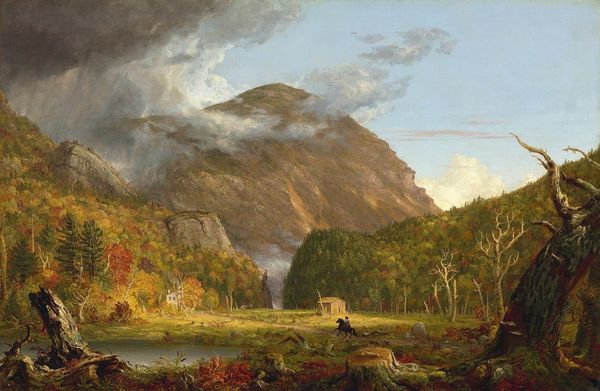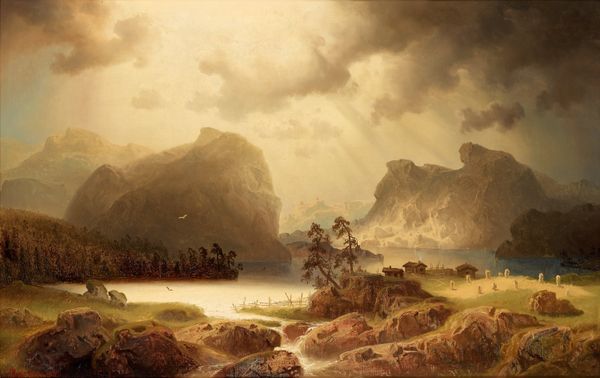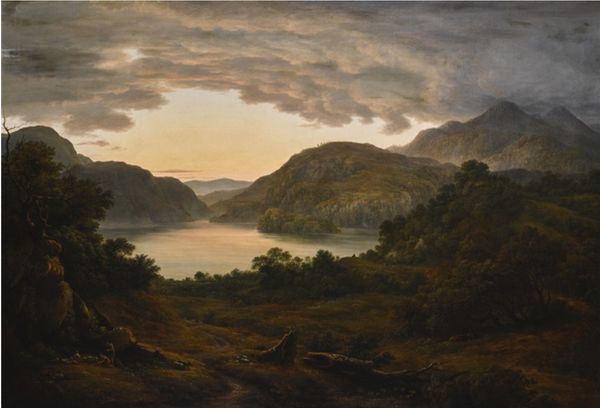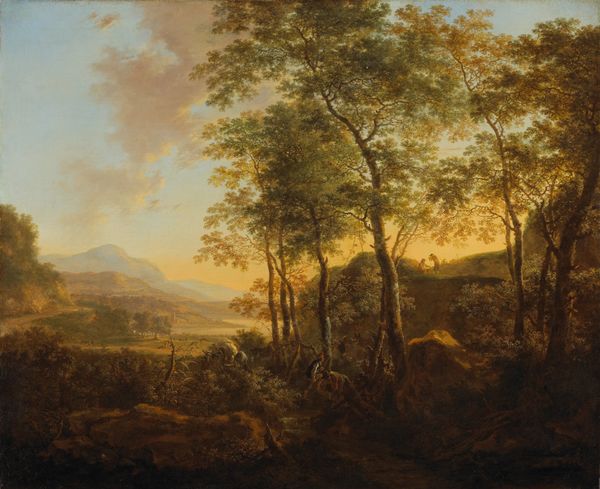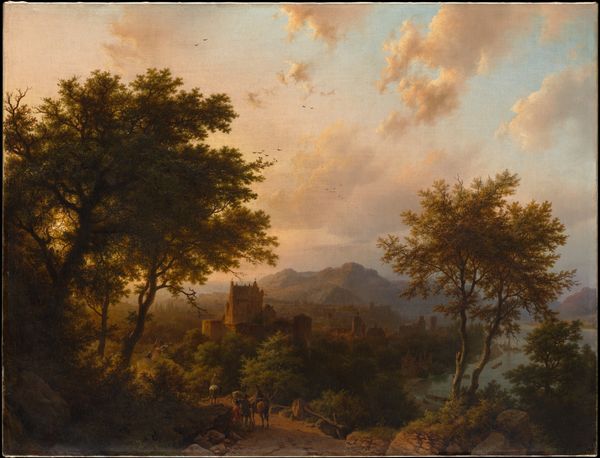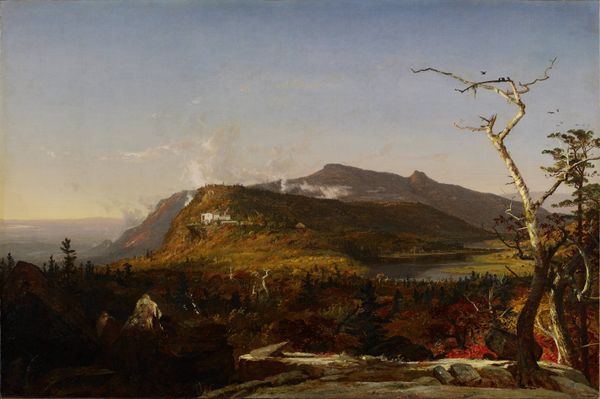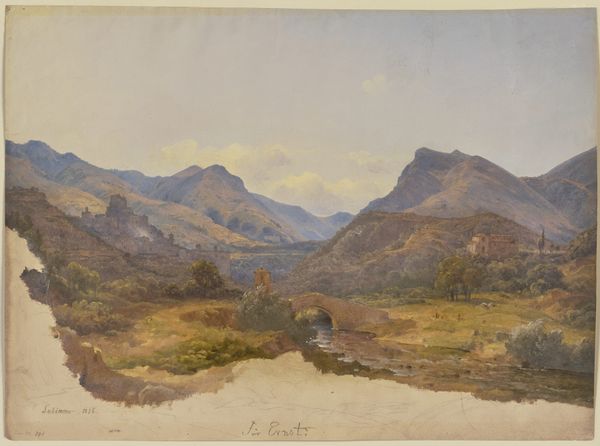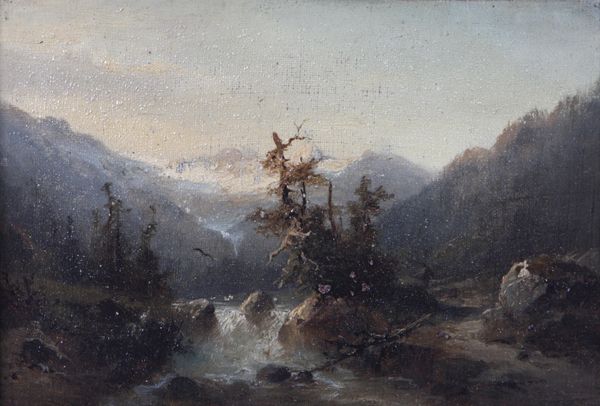
plein-air, oil-paint
#
plein-air
#
oil-paint
#
landscape
#
romanticism
#
natural-landscape
#
hudson-river-school
#
watercolor
#
realism
Copyright: Public domain
Curator: This painting pulls us into a scene where cultivated land meets the raw power of nature. Here we have Asher Brown Durand’s canvas, titled "The First Harvest in the Wilderness." Durand was part of the Hudson River School, wasn’t he? Editor: It’s lovely—overwhelming, almost. The mountains seem to brood in the distance while this pastoral foreground invites a simpler existence, doesn’t it? And that light cutting through the clouds... Curator: Durand definitely aligned with the Hudson River School ethos, presenting nature as a direct manifestation of God's presence. It speaks to that Romantic ideal, especially as it portrays an ideal balance between humanity and nature, although "First Harvest" could refer to that fragile balance achieved by settler colonialism as much as nature's abundance, don't you think? Editor: That's precisely the tension, isn't it? I find myself asking who this "harvest" is really for. Look how deliberately Durand frames this cultivation of land as inherently *good*—even ennobling, lit as it is by this sort of divine light, seemingly sanctifying settlement through nature. But I agree, it’s also fragile... Curator: Precisely! Note the recurring symbolic imagery; the contrast between light and shadow—an archetype of spiritual journey, or that juxtaposition between wild space and the home. Durand does suggest that human enterprise can harmonize with, perhaps even ennoble, wild space—transforming it for the better. He sees something profound in labor, don't you think? Editor: Definitely. But I can't shake off this impression that it might just be a sanitised view, crafted to promote ideas about manifest destiny. How might it appear if, say, Indigenous communities could shape such depictions of the Hudson Valley and beyond? Curator: The complexities woven into these early landscapes of nationhood are staggering. Perhaps that's why they continue to enthrall and challenge us so vividly. It reminds us of America's fraught negotiation with its identity as it developed. Editor: Indeed! Thanks to artists like Durand, we are able to question whose history is really on display and what versions of those histories they promote through symbolism, light, landscape and implicit manifest destiny, of course.
Comments
No comments
Be the first to comment and join the conversation on the ultimate creative platform.
